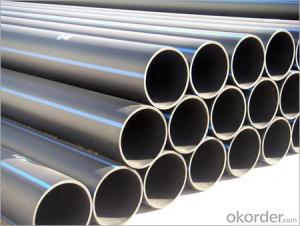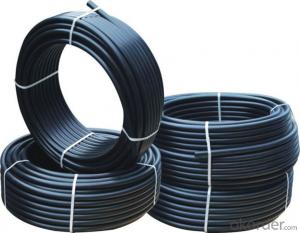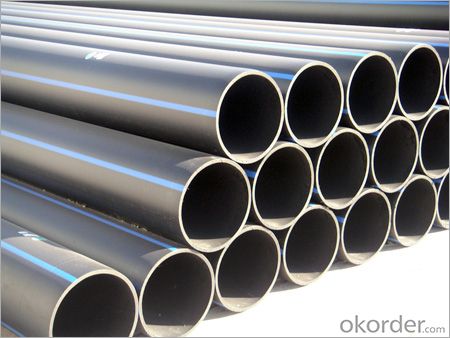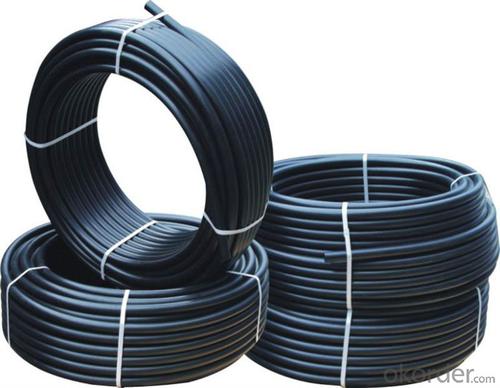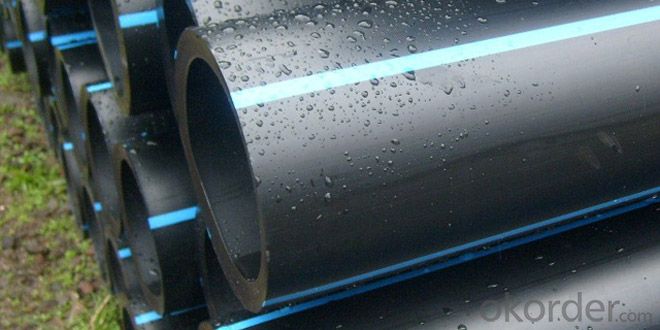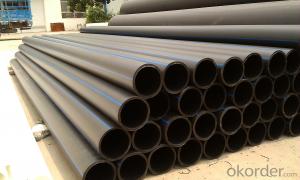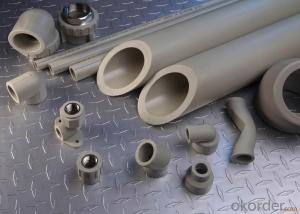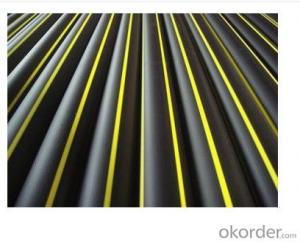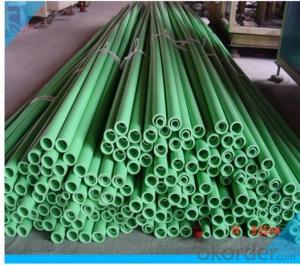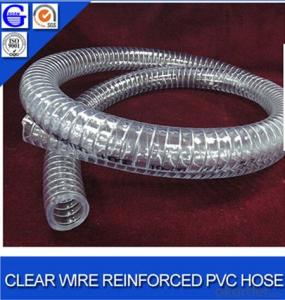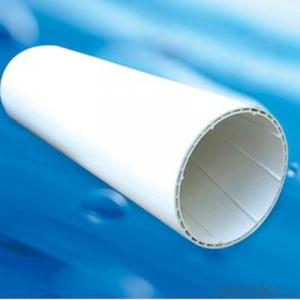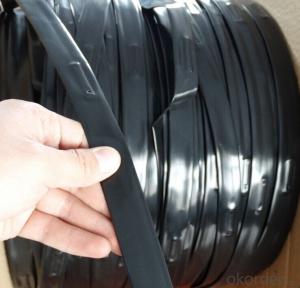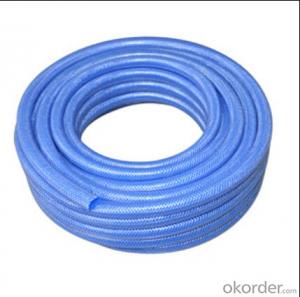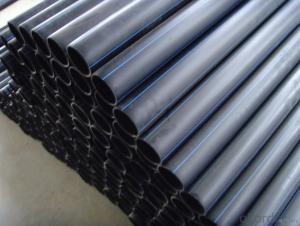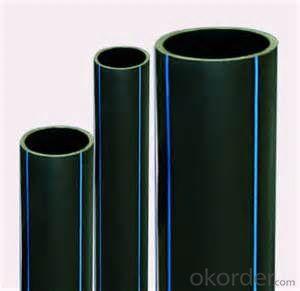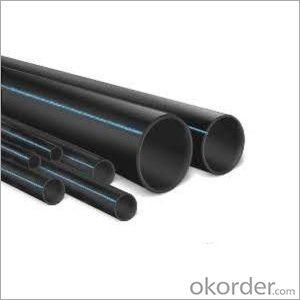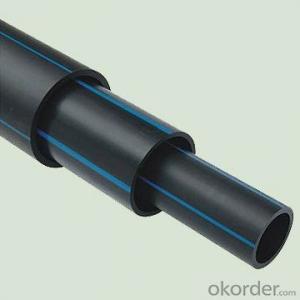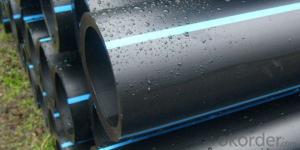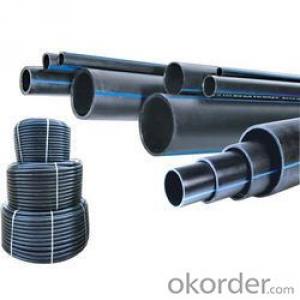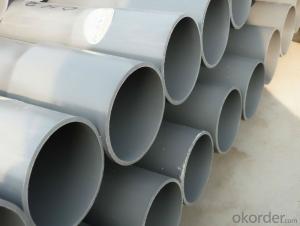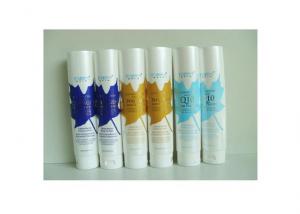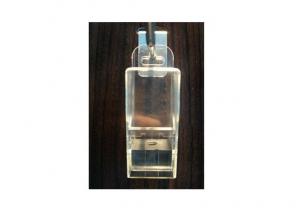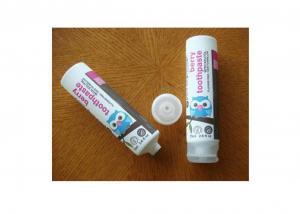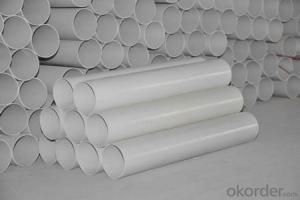CNBM HDPE Plastic Tubes 20-1000mm Manufacturer
- Loading Port:
- Tianjin
- Payment Terms:
- TT OR LC
- Min Order Qty:
- 100 m
- Supply Capability:
- 3000 m/month
OKorder Service Pledge
OKorder Financial Service
You Might Also Like
Specifications
ISO 4427 hdpe pipe
1.Manufacture
2.Application:water supply
3.Diameter:20-1000mm
Advantages:
1.Nontoxic:
PE pipe material nontoxic, tasteless,it belongs to green building materials, never scaling,
which can effectively improve the water quality.
2.Corrosion resistance:
High resistance to attack from various types of chemicals. No electrochemical corrosion.
3.No Leakage:
PE pipe is connected in the ways of butt fusion, socket fusion and electrofusion and the
strength of joint point is higher than tube itself .
4.higher flow capacity:
The Smooth inner wall is easy for pipeline transportation .Under the same condition
delivery capacity can be increased by 30%.
5.Convenient for construction and installation:
PE pipe could be installed in a variety of trenchless ways, so it is very convenient for
construction and installation.
6.Lower system and maintenance costs:
PE pipe is not only convenient to transport and install, but also reduce the worker’s
labor intensity and improve work efficiency.
7.Longevity:
50 years under pressure use.
8. Recycled and Environment-friendly
- Q: Can plastic tubes be used for pool equipment?
- Yes, plastic tubes can be used for pool equipment.
- Q: My child left her pierced earrings on way too long. The plastic backs are hardened onto the post. They are not the flat round ones. These are small clear plastic tubes. There must be a softener of some kind, no? Please help.
- Ok after trying all the same things, my husband took a pair of wire cutters and cut the very end of the plastic back off. The left over plastic part slipped right off and the earring is still able to be used.
- Q: Are plastic tubes available in flame-retardant options?
- Yes, plastic tubes are available in flame-retardant options. These tubes are specifically designed to reduce the spread of fire and meet certain safety standards.
- Q: I am using a device to push small volumes (60-100cc) through a plastic tube with a length of approx 24 and a diameter of 1mm or less. I can control flow rate, generally 2-4cc/sec. The liquid has a higher viscosity than water. I am trying to determine the difference in pressure on the piston face (which remains a constant size) using different fluids with slightly different viscosities through tubing of the same length, and differences in pressure using the same fluid through different tubing lengths. Ie; Fluid A and Fluid B through Tube 1, and Fluid A through Tube 1 and 2. The tubes are the same material, same diameter, regardless of length. The pressure used to push the piston remains the same across all fluid/tubing combinations.
- If the flow is not turbulent (no high speeds) and incompressible, and the tube is of circular cross section, then Poiseuille Law flow will ensue. In Poiseuille flow through a cylindrical pipe the velocity is largest along the centerline of the tube and diminishes to zero at the inner wall quadratically with distance r: v(r) = c (R^2 - r^2) with c a constant for given viscosity and pressure gradient ( delta(p) / L ) In Poiseuille flow through a cylindrical pipe the rate of flow (volume/second) is given by Qdot, where Qdot = ( Delta(p) pi R^4 ) /(8 eta L). (where eta is the dynamic viscosity of the fluid) Since the pressure difference Delta(p) is the pressure on the piston face - ambient pressure , let's call this (p - p0) , you have p - p0 = ( 8 eta L) * Qdot /(pi R^4) Using this Poiseuille' s Law you can calculate the pressure on the piston. You say at the end of your question that the pressure used to push is kept constant. In that case the flow rate you measure should be inversely proportional to eta and L.
- Q: Can plastic tubes be used for HVAC systems?
- Yes, plastic tubes can be used for HVAC systems. They are commonly used as an alternative to metal ductwork due to their lightweight, corrosion-resistant, and insulating properties. Plastic tubes are also easier to install and can provide better energy efficiency compared to traditional ductwork materials.
- Q: a molten plastic flows out of a tube 8 cm long at a rate of 13 cm^3/min where the pressure differential between the two ends of the tube is 18 cm of mercury. find the viscosity of the plastic. the i.d of the tube is 1.30 mm. the density of mercury is 13.6 g/ cm^3the answer is 0.097 kg/m.s or 97 cp! help!
- Hello Cedric Mapula, let us use the expression V/t = pi P a^4 / 8 l eta Here V/t = volume flown in one sec = 13 cm^3 / 60 s = 13/60 cm^3 /s pi = 3.14 P = 18*13.6*980 a = 1.3/ 20 cm = 0.065 cm l = 8 cm eta = ? Plug these and find the required eta i.e. coefficient of viscosity of liquid Ans : 0.969 g/cm*s = 0.969*10^-3/10^-2 kg/m*s = 0.0969 kg/m*s
- Q: Quality inspection station said that the ceiling does not let go PVC tube, I did not find evidence
- Because the rigid plastic pipe material is fragile and high temperature is easy to deformation, it should not be laid in the high temperature and easy to suffer mechanical damage." Should not be laid in high temperature and mechanical damage. There are many of the original process standards, there are also related content, PVC is not allowed in the ceiling laying, according to the estimate is also the provisions of the people's regulations, but more strict. The wind pipe belongs to the metal equipment in the building. According to the concept of equipotential bonding, it should be done with equipotential connection.
- Q: I'm trying to change the transmission fluid on my 2003 e320 by siphoning the fluid from the transmission fill tube with a Mityvac suction machine, but I can't open the cover of the fill tube. The cover has a red plastic pin attached on the side. Please advise as to how to remove this cover. Thanks
- The red pin lock is designed to be a one-time use only pin. Break it and replace it when you're done. They're less than $1 and your Benz dealer will have lots of them in stock.
- Q: How are plastic tubes filled with powders or granules?
- Plastic tubes are typically filled with powders or granules using a variety of methods such as manual filling, automated filling machines, or specialized equipment. The powder or granules are poured or funneled into the open end of the tube, and then the tube is sealed to prevent any spillage or contamination.
- Q: I can't remember any other details of the episode, only that the chemicals they give the patient are so poisonous that it will actually eat through the plastic IV tubing. . . .
- i remember an ep where they need to use one and it's like ACID in her veins.it was woman they used it on. Edit yes she is right it's 1-07 Fidelity. i checked out ep and confirmed it.
Send your message to us
CNBM HDPE Plastic Tubes 20-1000mm Manufacturer
- Loading Port:
- Tianjin
- Payment Terms:
- TT OR LC
- Min Order Qty:
- 100 m
- Supply Capability:
- 3000 m/month
OKorder Service Pledge
OKorder Financial Service
Similar products
Hot products
Hot Searches
Related keywords
